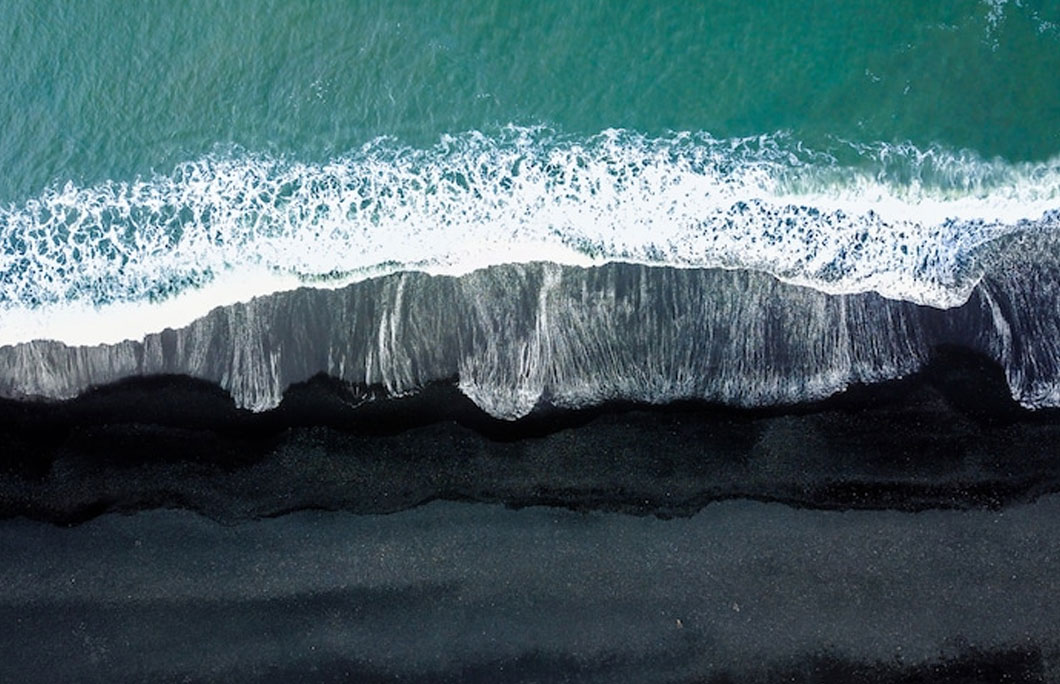1. Black sand beaches
Not all the beaches in Saint Vincent and the Grenadines are white sand
Saint Vincent and the Grenadines are renowned for their white sandy stretches. There’s a reason directors chose to film three of the Pirates of the Caribbean movies here after all. But Saint Vincent is actually a volcanic island. It’s the only island in the Grenadines with black sand beaches. For instance, at Rawacou Recreation Park, the Atlantic surf crashes into striking black sand beaches. Not all of the island is so proud of this unique topography though. For instance, five star resort Buccament Bay Resort, has actually imported white sand to cover the black sand.
2. Pirates of the Caribbean: The Curse of the Black Pearl
If you're a fan of the 'Pirates' franchise, make sure to visit Wallilabou Bay. This stunning location served as the backdrop for several scenes in the movie 'Pirates of the Caribbean: The Curse of the Black Pearl', portraying the fictional port of 'Port Royal.' Today, Wallilabou Bay has transformed into a museum-like exhibition, showcasing remnants from the film, including props, cast autographs, and costumes.

3. Roasted breadfruit and fried jackfish
The national dish of St Vincent and the Grenadines is roasted breadfruit and fried jackfish. Seen as the symbol of the islands, breadfruit was brought to St Vincent and the Grenadines from Tahiti in 1793. The breadfruit is normally roasted on open charcoal or firewood then baked in an oven until soft.
4. St Vincent and the Grenadines Botanic Gardens
It is the oldest botanical garden in the Western hemisphere. Commissioned in 1765, the gardens started life as six acres dedicated to facilitating botanical studies. Unlike many other projects, the British never funded the building of the gardens. Robert Melvill, the Scottish soldier and botanist, privately funded the project during his tenure in the Windward Isles. At the beginning, it contained around 52 plant species. 

5. Saint Vincent, Land so Beautiful"
Saint Vincent, Land so Beautiful" is the national anthem of Saint Vincent and the Grenadines. The song was first performed in 1967[1] and was adopted as the national anthem upon independence from the United Kingdom in 1979. The lyrics were written by Phyllis Joyce McClean Punnett and the music by Joel Bertram Miguel.[2]
6. History
The indigenous inhabitants of the islands of St. Vincent and the Grenadines were various Amerindian groups. The arrivals of Europeans in the early 16th century did not lead to long term settlement, only in 1717 did the French occupy the island in Barrouallie, though the English laid claim on St. Vincent in 1627. The Treaty of Paris (1763) saw St. Vincent ceded to Britain. Frictions with the British led to the First and Second Carib War in the mid- to late-18th century but the British held on to the islands. A Crown Colony government was installed in 1877, a Legislative Council created in 1925, and universal adult suffrage granted in 1951. Following a referendum in 1979, St. Vincent and the Grenadines became the last of the Windward Islands to gain independence on 27 October 1979.
Text from Wikipedia. A photo from Barrouallie...
7. Madongo dumplings
Made from native arrowroot along with nutmeg and coconut, madongo dumplings are a speciality that you’ll only find in St Vincent and the Grenadines.
This is largely because arrowroot isn’t grown anywhere else, with St Vincent one of the only places that cultivates the flour for trade.
Arrowroot is naturally gluten-free, meaning those with food sensitivities in your party shouldn’t suffer.
Where to try madongo dumplings in St Vincent & The Grenadines
Madongo dumplings are very much an example of home-style Caribbean cooking, rather than a delicacy that you’ll find on restaurant or hotel menus across the island. If you try them, know you’re getting a real authentic taste of St Vincent & The Grenadines.
Your best bet for tracking down these tasty dumplings is at a street food stall or at a family-owned eatery – or if you’re lucky enough to be invited to dinner by a local! You’ll get a taste of authenticity and Vincentean home cooking that it’ll be difficult to beat.
:max_bytes(150000):strip_icc()/madombi-dumplings-recipe-5071291-hero-01-f1c69d246588483cbee4d9e0ef38d8f5.jpg)
9. High peaks on Soufriere Volcano
The island’s two highest peaks are both on the volcano Soufrière (4,048 feet [1,234 metres] and 3,864 feet [1,178 metres]), in the north, which erupted disastrously in 1812 and 1902, seriously affecting the country’s agriculture and temporarily displacing residents of communities around the foothills of the volcano. The 1902 eruption coincided with that of Mount Pelée on Martinique. Soufrière became active again in 1979, repeating the cycle of agricultural damage and massive evacuation. The volcanic ash, which spread as far as Barbados, is said to have enhanced the fertility of the soil. Other noteworthy peaks on the island include Grand Bonhomme and Mount St. Andrew.
https://www.britannica.com/place/Saint-Vincent-and-the-Grenadines






